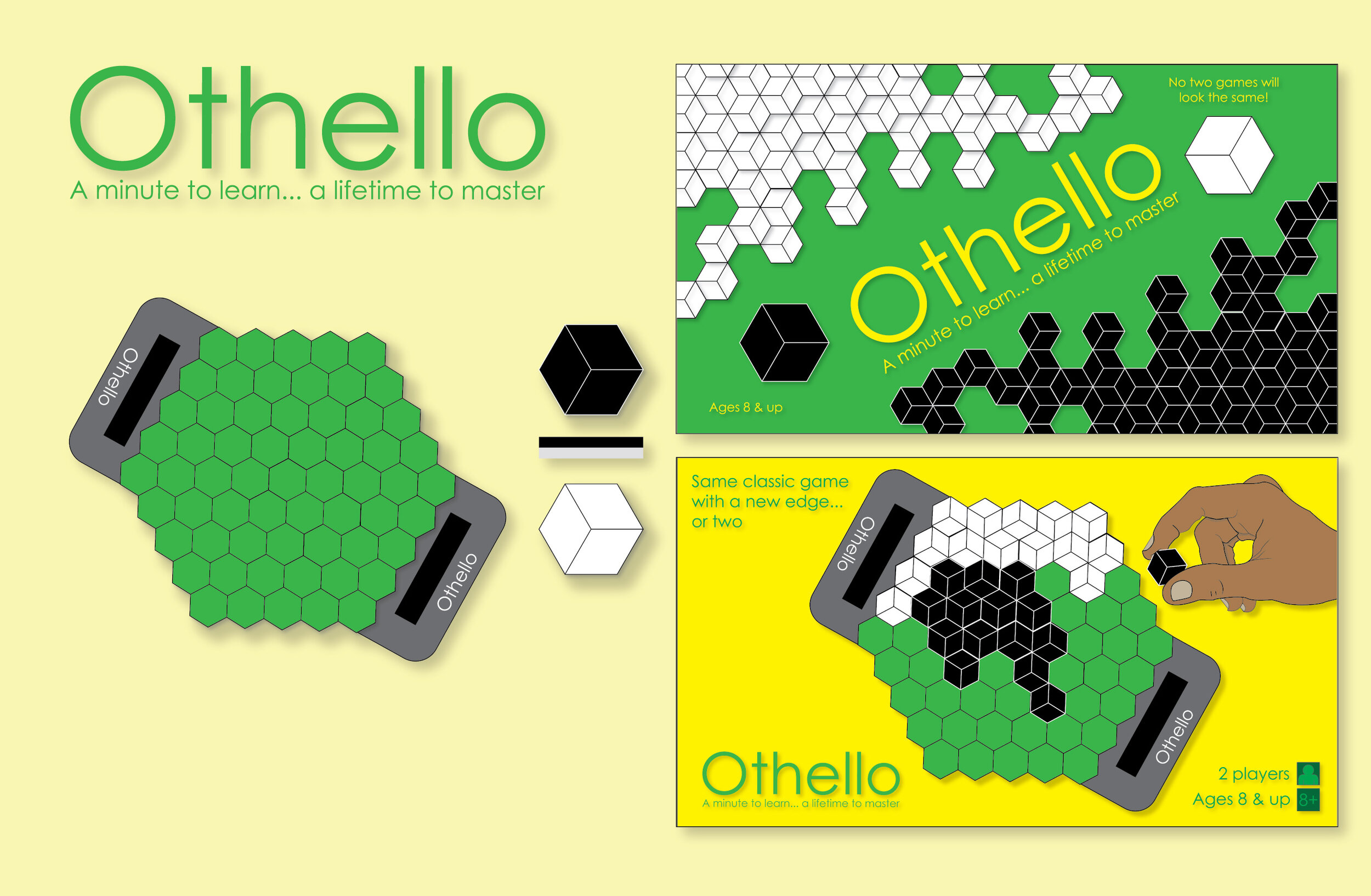
Othello
A board game, created in 1883, where two players’ take turns placing discs on an 8x8 uncheckered board trying to overtake the opposing players discs and have the most on the board by the end of the game.
A minute to learn
A basic concept that has existed almost unchanged in its presentation since the 1900’s. The game was once one of the most popular board games on the market, it was easy for anyone to understand but offered complex strategy to keep people coming back. But with the last major change to the games presentation being in the 1950’s it has unfortunately been left in the past.
A lifetime to master
I set out to modernize the game. Not only in appearance and presentation but I also wanted to add a new twist that would excite new players and get old players interested again.

Aesthetics
The game is all about the duality of color. I played with this by making the background and text colors flip flop on the front and back of the box. I also used the different sides of the pieces to create a sense of battle. Two opposing forces slowly creeping towards each other.
I chose this green and yellow color scheme as a tribute to the original game board. It was made out of green felt similar to pool tables. I wanted to keep this color as a way to keep the game grounded to the original. I added a complementary yellow to act as the duality component and a stark white to balance everything out and create legibility.
Finally, I wanted to clean everything up and give the box a balanced, modern design. I used a sans serif with no altering stroke weight and characters based off a perfect circle to add to the sense of balance and clean line. I chose to illustrate everything to avoid a contrast between photography and flat art.

Game Play
The original game features a square board with round game pieces. This works fine but by creating a hexagonal board with hexagonal game pieces that rest up against each other, you create opportunity for a much more interesting visual experience. I designed the flat game pieces to look like a three dimensional cube so that when there are many pieces next to each other on the board it creates an optical illusion that makes it hard to tell where one piece ends and another begins. it creates a pattern of cubes or boxes depending on how and where you look at the board. This small change creates a whole new and interesting experience for new comers or seasoned veterans.

